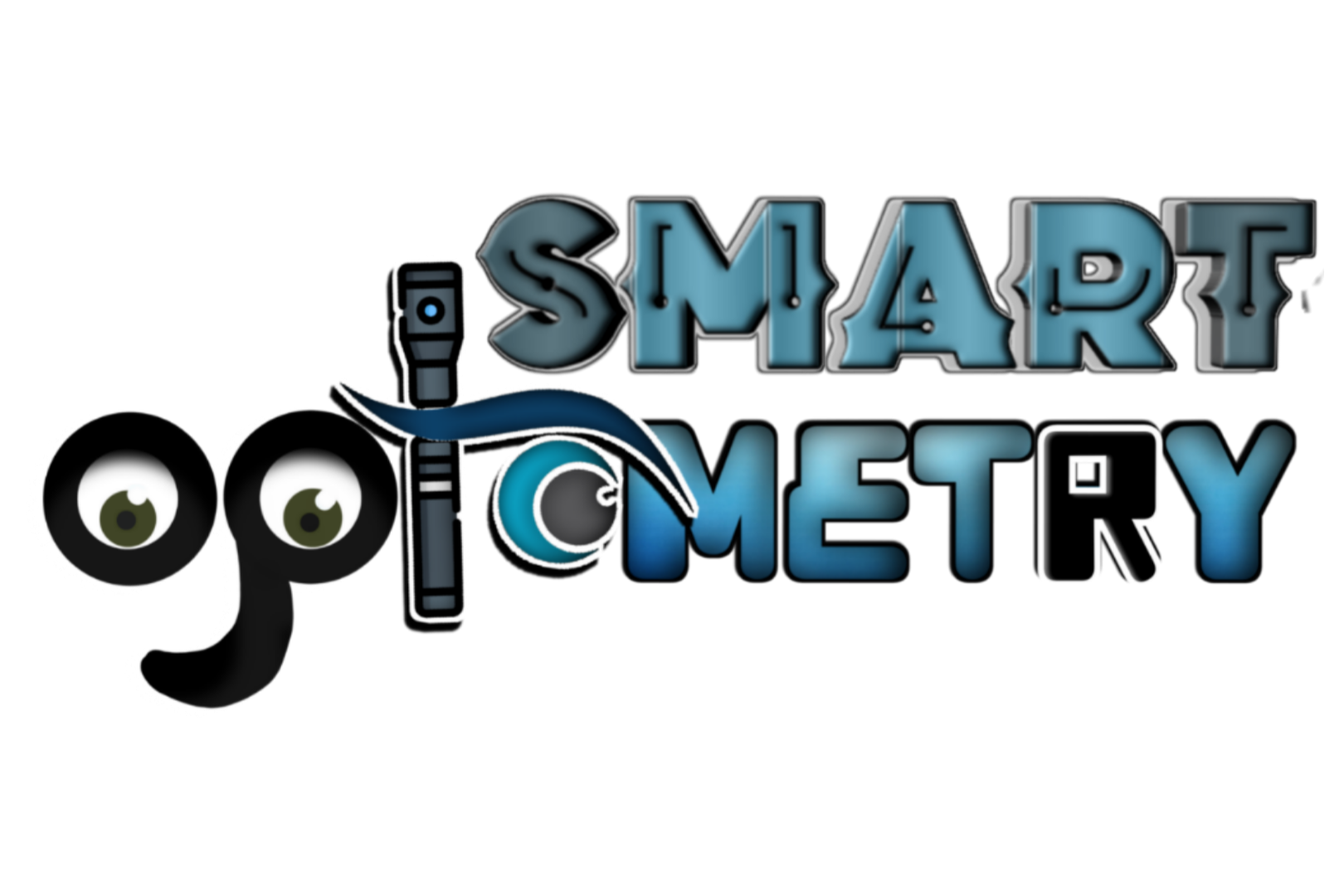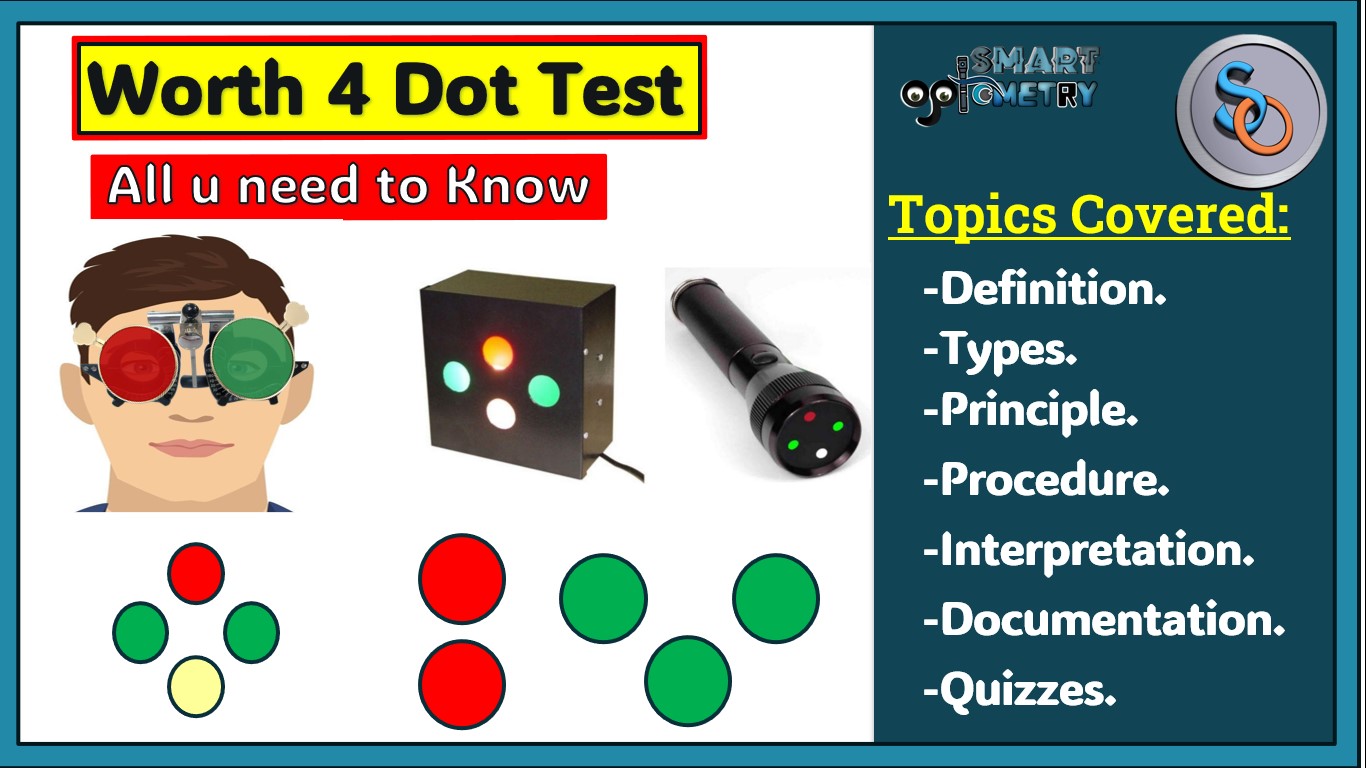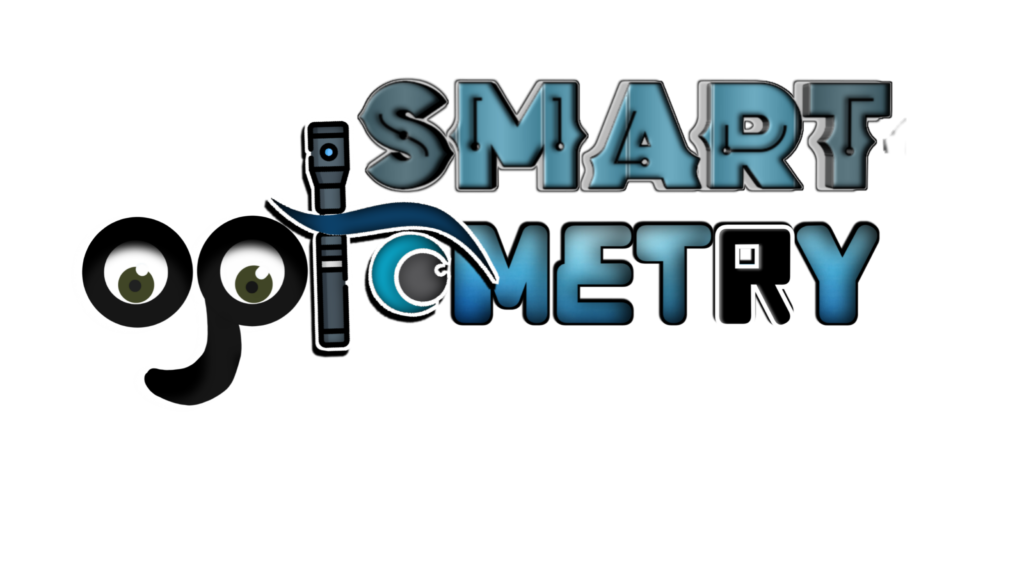What is Worth 4 Dot Test (W4DT)?
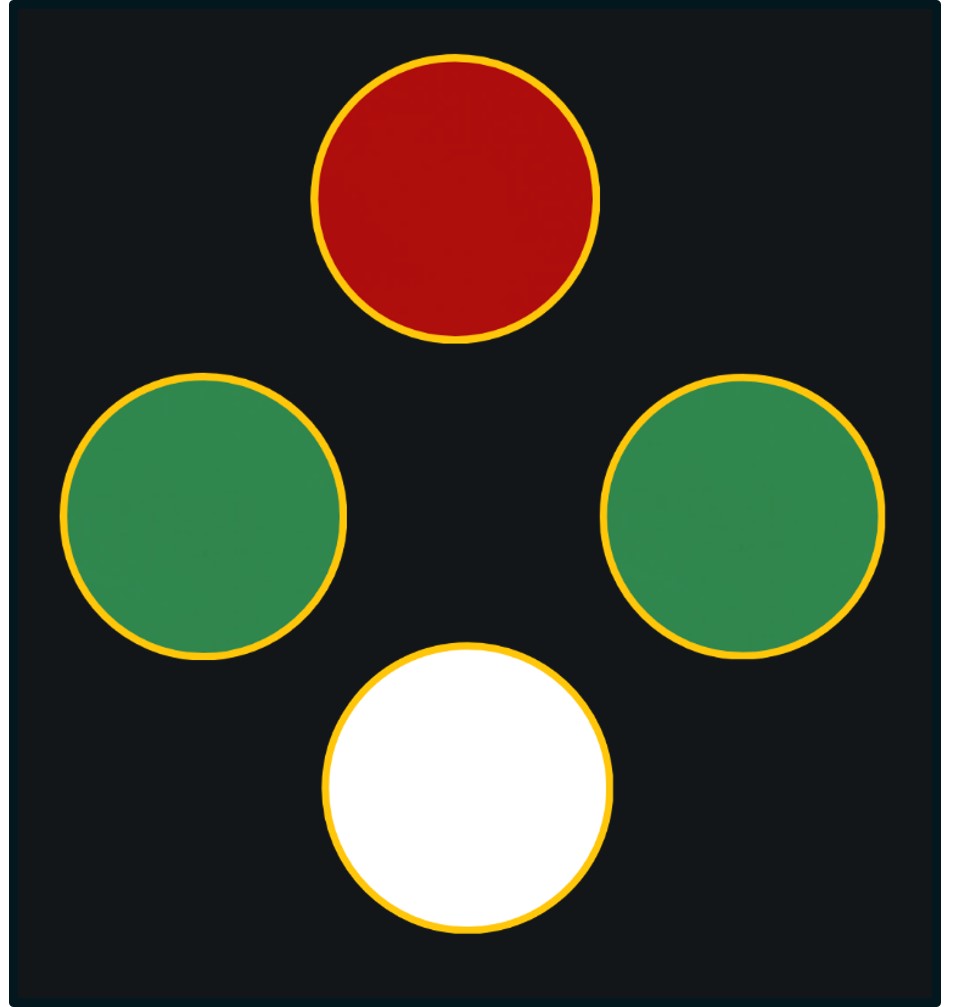
- Worth 4 Dot test is performed with wearing a Red-Green filter and a chart which contains 4 dots in black background, hence the name Worth 4 Dot Test.
- Simple clinical test mainly used for assessing a patient’s degree of binocular vision or the sensory fusional status.
- Worth 4 DOT chart contain 4 Dot:
- One red dot is always at the top.
- Two green dots on either side (Lt and Rt).
- One white dot is always at the bottom.
Principle of Worth Worth 4 Dot Test (W4DT):
- Worth 4 Dot Test is based on binocular Dissociation.
- During this test a Red filter is place in Right Eye and Green Filter in Left Eye.
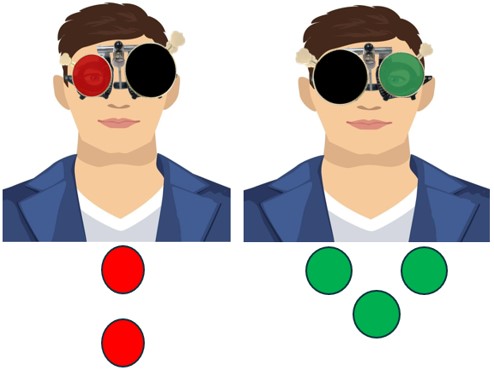
Principle of Red Filter:
- Through the Red filter Green rays can’t Pass, it becomes black and disappear with black background.
- Red Dot Will be seen as Red through the Red Filter.
- White Dot will be seen as Red through Red Filter.
- Thus, through red filter only 2 Red Dot will be seen (1 at Top and 1 at Bottom).
Note: If wavelength of red filter and red dot was same then both will cancel each other, and Red Dot will be seen as a White. But Worth Uses a different wavelength of Red filter thus Red dot is seen as Red through the Red Filter.
Principle of Green Filter:
- Through the Green filter Red rays can’t Pass, it becomes black and disappear with black background.
- Green will be seen as Green with Green Filter.
- White Dot will be seen as Green through Green Filter.
- Thus, through Green filter total 3 Green Dot will be seen (2 Green Dot in Both Sides and 1 at Bottom).
Note: If wavelength of Green filter and Green dot was same then both will cancel each other, and Green Dot will be seen as a White. But Worth uses a different wavelength of Green filter thus Green dot is seen as Green through the Green Filter.
Methods of Worth 4 dot Test:
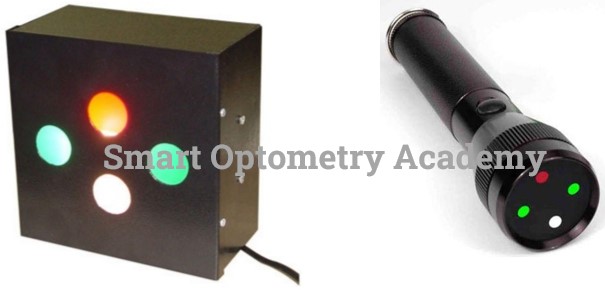
- There are two methods of performing this test:
i. Distance Worth dot test:
- Perform at a distance of 6 Meter.
- Target fixed at a 6m from the subject, which may either be contained in an illuminated box or projected on a screen.
ii. Near Worth dot test: at 33 cm
- Target fixed at a 33cm from the subject, which consists of a flashlight helps to alter the projection angle.
Note: W4DT can be performed at any distance. Ideal way is to start at near at 33 cm and ask the patient to maintain the fixation. While patient is fixating gradually moves the chart at distance. If in any distance patient sees less than 4 dots indicates suppression scotoma at that distance.
Procedure of Worth 4 Dot Test:
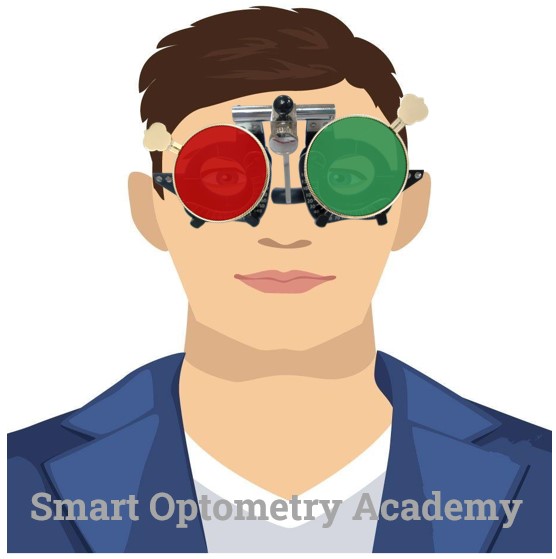
Patient Preparation:
- Ask the patient to wear the trial frame.
- Place the best refraction correction & then place the red-green glasses over the patient’s correction.
- Red filter over the right eye and green filter in the left eye.
- In a slightly dimmed room, turn on the flashlight slightly below the Line of Sight (LOS).
Note: It’s not mandatory to place the Red Filter in the Right Eye and Green filter in Left Eye. Its can be opposite also but RE image will be 3 Green and LE image will be 2 Red (Opposite).

To test Right Eye:
- Cover the left eye and ask how many dots they see now. They should report 2 red.
To test Left Eye:
- Cover the right eye and ask how many dots they see now. They should report 3 green.
For the binocular test:
- With both eyes uncovered ask a third time how many dots they see. If normal fusion is present, they should report 4 dots.
Interpretation of Worth 4 Dot Test:
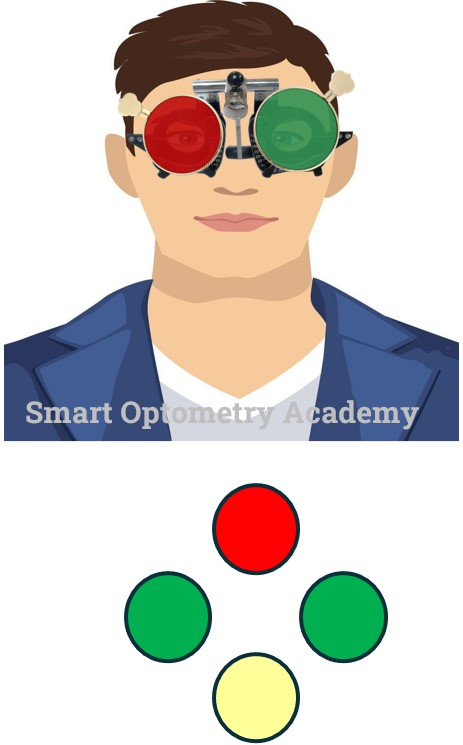
Patient Response:
- 4 dots (2 green, 1 red & 1 Yellowish)
Interpretation:
- Binocular Single Vision
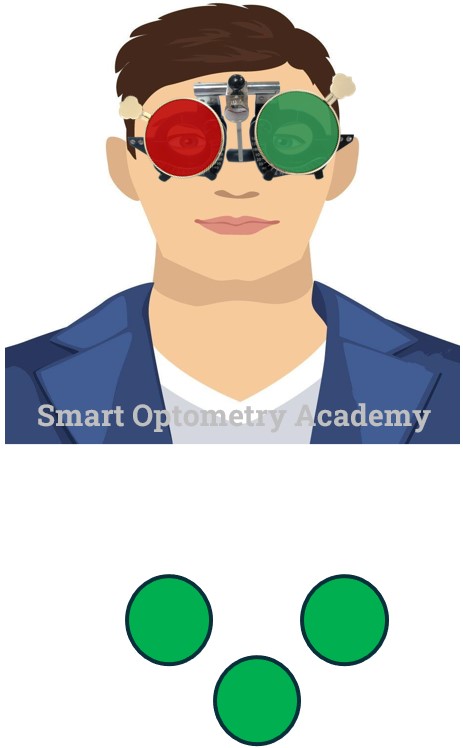
Patient Response:
- 3 Dots (Only 3 green dots)
Interpretation:
- Right eye Suppression
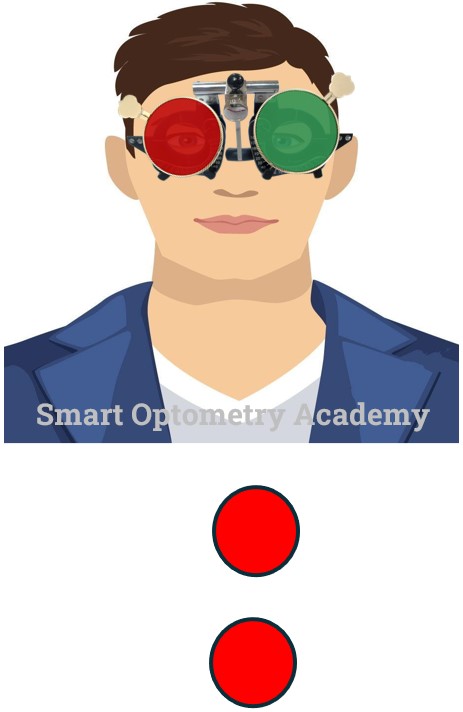
Patient Response:
- Only 2 Red dots
Interpretation:
- Left eye Suppression
Patient Response:
- 3 green dots & 2 Red dots alternatively
Interpretation:
- Alternate Suppression
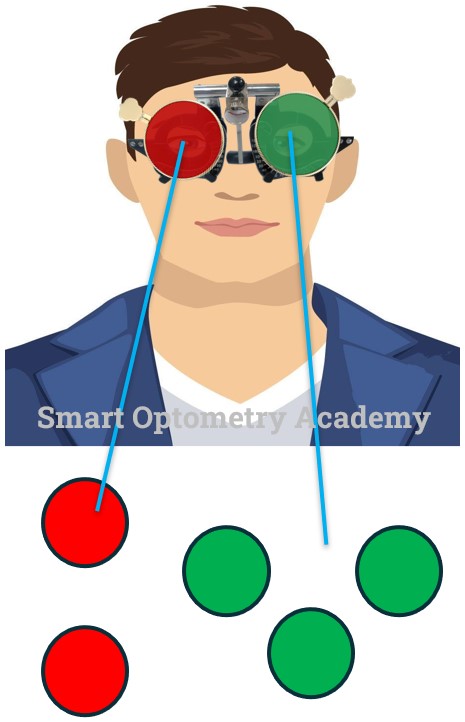
Patient Response:
- 2 Red dot in Rt side & 3 Green Dots in Lt
Interpretation:
- Uncrossed Diplopic
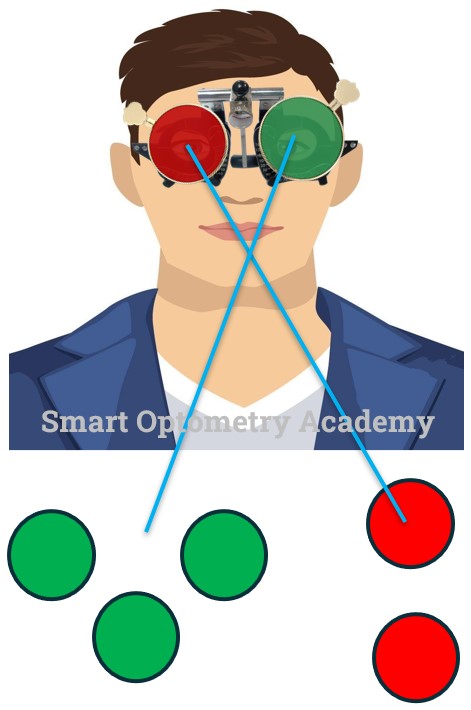
Patient Response:
- 2 Red dot in Lt side & 3 Green Dots in Rt
Interpretation:
- Crossed Diplopic
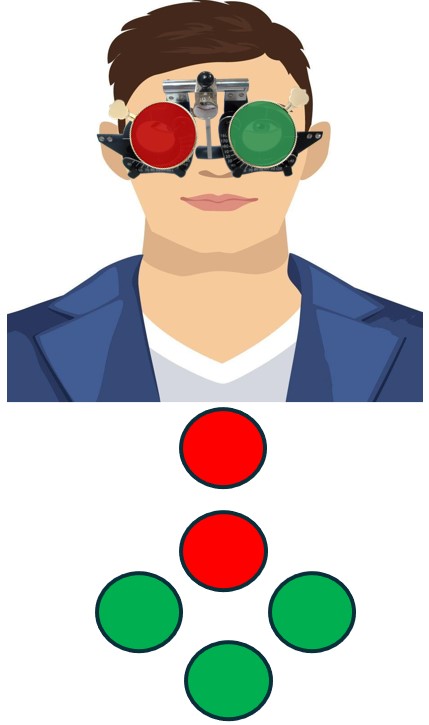
Patient Response:
- 2 Red dots up & 3 green dots Down
Interpretation:
- Vertical Diplopic with right hypotropia/ Lt hypertropia
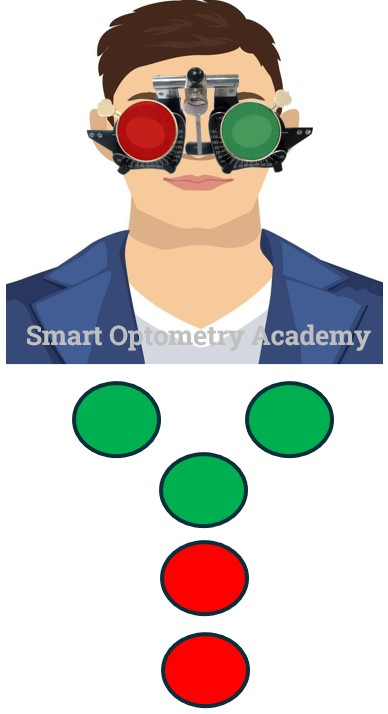
Patient Response:
- 2 Red dots Down & 3 green dots up
Interpretation:
- Vertical Diplopic with left hypotropia/Rt hypertropia
Indications of Worth 4 Dot Test (W4DT):
1. Sensory Fusion:
A patient with normal Sensory fusion will see 4 dots and the color of bottom dot will yellow-orange due to fusion of Red of Right Eye and Green of Left Eye.
2. Manifest Strabismus:
- Helps to identify vertical and Horizontal manifest strabismus:
- a. Esotropia.
- b. Exotropia.
- c. Hypertropia.
- d. Hypotropia.
3. Diplopia:
- This test can help in determining the nature and type of the diplopia.
- a. Crossed Diplopia.
- b. Uncrossed Diplopia.
4. Suppression:
- Helps to identify which eye is suppressing.
5. Central suppression scotoma:
- It can be used to detect where the lights may not be appreciated from the eye with the scotoma.
- Check Our Courses: Ophthalmic Instrumentation, Clinical Refraction, Contact Lens, Binocular Vision, Dispensing Optics, MCQs in Optometry
- Download our App “Optometry Notes & MCQs” from Google Play Store.
